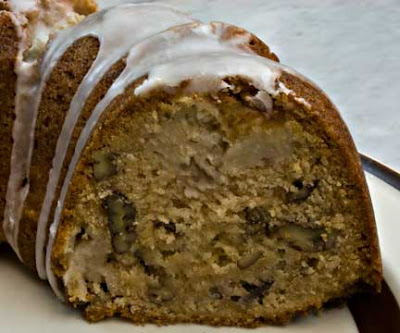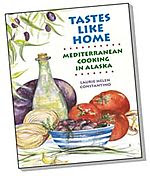Christmas is coming faster than you’d think, which means Christmas baking season is nearly upon us.
For the last few days, I’ve been working on a fun, new, seasonally appropriate, and colorful Christmas dessert. After several attempts, I’ve finally perfected my recipe for Pomegranate Ice Cream in Pistachio-Cardamom Cookie Sandwiches.
The recipe is amazing. Tart pomegranate, rich pistachio, and aromatic cardamom come together harmoniously in every bite of the ice cream sandwich.
I originally made mini-sandwiches because I was testing successive versions of the recipe in small batches. I soon realized the small sandwiches were ideal for serving after a holiday meal. They provide just enough sweetness to finish the meal with a flourish, yet are light enough to prevent that overstuffed feeling.
One version of my cookie recipe was light and crisp; too crisp for ice cream sandwiches, but perfect for serving on its own as a cookie. This cookie is so delicious, I’ve included the recipe below. I’m also adding Crispy Pistachio-Cardamom Cookies to the mixed plates of Christmas cookies I make every year for friends.
Pomegranate Ice Cream is also terrific on its own, and extremely easy to make. It takes less than 5 minutes to mix the ingredients, and the ice cream maker does the rest of the work. Serve scoops of the ice cream plain, with a few pomegranate seeds (arils) sprinkled over the top, or even with Crispy Pistachio-Cardamom Cookies on the side. This is another tart-yet-light dessert for serving after holiday meals.
Besides their deliciously tart flavor, pomegranates are good for your health. They contain large amounts of Vitamin C and B5, as well as many other phytochemicals. Tests show pomegranates may reduce heart disease risk factors and reduce blood pressure.
Here's my theory: So long as you eat it during the holiday season, the heart healthy benefits of pomegranate counteract the negative effects of eating cream, making Pomegranate Ice Cream a guilt-free treat.
 Pomegranate Ice Cream in Pistachio-Cardamom Cookie Sandwiches
Pomegranate Ice Cream in Pistachio-Cardamom Cookie SandwichesMakes 20 1 1/2” sandwiches or 10 3” sandwiches
1 recipe Pistachio-Cardamom Cookies for Ice Cream Sandwiches (see recipe below)
1 recipe Pomegranate Ice Cream (see recipe below)
Make the Pistachio-Cardamom Cookies for Ice Cream Sandwiches and let them cool completely.
Make the Pomegranate Ice Cream. When it's done, put it in the freezer for 1/2 hour to firm up.
Lay out the plain cookies, underside up, on a cookie sheet. Using a 1 Tbsp. scoop for 1 1/2” sandwiches or a 2 Tbsp. scoop for 3” sandwiches, place a scoop of ice cream on each plain cookie. Top the ice cream with cookies that have pistachios in the center, pushing down carefully to flatten out the ice cream without breaking the soft top cookie.
Freeze. Serve straight from the freezer. If you are storing the ice cream sandwiches for any length of time, wrap them individually in plastic wrap.
 Pomegranate Ice Cream
Pomegranate Ice CreamMakes about 3 cups of ice cream (enough for 20 small, or 10 large, ice cream sandwiches)
Alcohol lowers the freezing point of ice cream, which makes it slightly softer and easier to serve than ice cream that doesn’t include alcohol. Even without the alcohol, Pomegranate Ice Cream is delicious, although it may form noticeable ice crystals. Pomegranate liquor enhances the pomegranate flavor, but raspberry-flavored vodka and plain vodka also work well and both have the benefit of being sold in miniature bottles. If you are making this to serve on its own, and your ice cream maker is large enough, double the recipe.
1 cup pomegranate juice from fresh pomegranates OR 1 cup 100% Pomegranate Juice (see Note below)
1 cup half and half
1/2 cup cream
1 Tbsp. pomegranate liqueur or vodka
1 Tbsp. lemon juice
1/4 cup sugar
1/8 tsp. salt
Thoroughly whisk all the ingredients together. Put the mix in an ice cream maker and freeze according to the manufacturer’s instructions.
Note on pomegranate juice: Here’s how to juice pomegranates: Cut the pomegranates in half, and juice with a citrus juicer. If you don't have a citus juicer, remove the pomegranate seeds (more accurately, arils) from the skins, discarding the white fibrous matter separating the seeds. (You’ll make less of a mess if you do this underwater.) Whir batches of the seeds in a food processor and then put through a strainer to remove the pits (a Foley food mill works well for this task). If you don't have access to fresh pomegranates, 100% pomegranate juice works just fine in this recipe.
Pistachio-Cardamom Cookies (for use in ice cream sandwiches)
Makes 40 1 1/2” cookies (20 sandwiches) or 20 3” cookies (10 sandwiches)
With added cornstarch to reduce the protein content of the flour, egg yolk instead of whole egg, and slightly underdone cookies, this version is tenderer than cookies intended to be served on their own. The tenderness makes the cookies softer and easier to bite through, an important consideration for ice cream sandwiches. These cookies are more highly seasoned than cookies that aren’t served frozen. If you want Pistachio-Cardamom Cookies for eating on their own as cookies, see the recipe below for Crispy Pistachio-Cardamom Cookies. In a pinch, if you can’t find raw pistachio nuts, buy roasted, salted nuts (Costco often carries these), rinse off the salt, and dry them very well before using in the recipe. If you have a convection oven, you can bake multiple sheets of cookies at one time; if not, bake the cookies one sheet at a time.
1/2 cup shelled, unsalted pistachio nuts
1/2 cup sugar
1/2 cup unsalted butter (1 stick), softened
1 egg yolk
1 tsp. vanilla extract
1/2 – 3/4 cup all purpose flour
1/4 cup cornstarch
1/8 tsp. salt
3/4 tsp. freshly ground cardamom (1 tsp. if using pre-ground cardamom)
Coarse sugar crystals for topping the cookies
Extra pistachio nuts for topping the cookies
Preheat the oven to 325°F (or 300°F convection).
Add the pistachios and sugar to a food processor or blender, and process just until the pistachios are finely ground.
Using the mixer’s whisk attachment, cream the butter and half the pistachio sugar until they are light and creamy. Beat in the egg yolk and vanilla, scraping down the sides of the bowl, as needed. Mix in the remaining pistachio sugar.
Sift together 1/2 cup flour, cornstarch, salt, and ground cardamom. Using the mixer’s paddle attachment, slowly mix the dry ingredients into the wet ingredients. Add the remaining flour, as needed; the dough should be pliable, but not at all sticky.
Roll out the dough on a floured cloth until it is 3/16” thick (gather up the trimmings and reroll them). Cut out the dough with a cookie cutter (I like 1 1/2” circles for mini ice cream sandwiches), and place on cookie sheets lined with parchment paper or Silpats. Sprinkle each cookie with coarse sugar crystals. Push one pistachio nut into the center of half the cookies.
Bake for 7 - 8 minutes, or until the cookies have firmed up, but are still underdone. Remove from the oven and place the cookie sheets on wire racks to cool (don’t remove the cookies from the cookie sheets until they are completely cool).
 Crispy Pistachio-Cardamom Cookies (for serving as cookies)
Crispy Pistachio-Cardamom Cookies (for serving as cookies)Makes 80 1 1/2” cookies or 40 3” cookies
This recipe produces crispy cookies that are perfect for serving on their own, with a cup of tea, or as part of a mixed plate of Christmas cookies. (Crisp cookies aren’t suitable for ice cream sandwiches because they’re too hard to bite through when frozen.) In a pinch, if you can’t find raw pistachio nuts, buy roasted, salted nuts (Costco often carries these), rinse off the salt, and dry them very well before using in the recipe. If you have a convection oven, you can bake multiple sheets of cookies at one time; if not, bake the cookies one sheet at a time.
1 cup shelled, unsalted pistachio nuts
1 cup sugar
1 cup unsalted butter (2 sticks), softened
1 large egg
1 tsp. vanilla extract
1 3/4 – 2 cups all purpose flour
1/4 cup cornstarch
1/4 tsp. salt
1 tsp. freshly ground cardamom (1 1/2 tsp. if using pre-ground cardamom)
Coarse sugar crystals for topping the cookies
Extra pistachio nuts for topping the cookies
Preheat the oven to 325°F (or 300°F convection).
Add the pistachios and sugar to a food processor or blender, and process just until the pistachios are finely ground.
Using the mixer’s whisk attachment, cream the butter and half the pistachio sugar until they are light and creamy. Beat in the egg and vanilla, scraping down the sides of the bowl, as needed. Mix in the remaining pistachio sugar.
Sift together 1 3/4 cup flour, cornstarch, salt, and ground cardamom. Using the mixer’s paddle attachment, slowly mix the dry ingredients into the wet ingredients. Add the remaining flour, as needed; the dough should be pliable, but not at all sticky.
Divide the dough in half. Roll the halves out on a floured cloth until they are 3/16” thick (gather up the trimmings and reroll them). Cut out the dough with cookie cutters (I like 1 1/2” circles), and place on cookie sheets lined with parchment paper or Silpats. Sprinkle each cookie with coarse sugar crystals and push one pistachio nut into the center of each cookie.
Bake for 10 – 12 minutes, or until the cookies just barely start to brown. Remove from the oven, and use a spatula to place the cookies on wire cooling racks. Store in an airtight container.
~~~~~~~~~~~~~~~~~~~~
Pomegranate Ice Cream in Pistachio-Cardamom Cookie Sandwiches is my contribution to Sugar High Friday: All That Glitters hosted this month by Susan of The Well-Seasoned Cook
Crispy Pistachio-Cardamom Cookies is my contribution to Eat Christmas Cookies: Season 2, which is created and hosted by Susan of Food Blogga. Check out Susan’s round-up page to see all the cookie recipes submitted this year (Susan will continuously update the page as new cookie recipes are submitted).
 Limpets tightly adhere to rocks in shallow water where the sea meets the shore. They’re found throughout the Mediterranean, and on rocky coastlines
Limpets tightly adhere to rocks in shallow water where the sea meets the shore. They’re found throughout the Mediterranean, and on rocky coastlines  I recognized the limpets immediately but couldn’t fathom why two grown men would gather them. “They’re called petalides” my husband said. “Try one, they’re edible.” He pulled out two limpets the size of half-dollars and wiped algae off the undulating brown feet with a corner of his shirt.
I recognized the limpets immediately but couldn’t fathom why two grown men would gather them. “They’re called petalides” my husband said. “Try one, they’re edible.” He pulled out two limpets the size of half-dollars and wiped algae off the undulating brown feet with a corner of his shirt.  It takes good balance to gather limpets. The rocks on which they live are slippery with algae; breaking waves make the rocks even more treacherous.
It takes good balance to gather limpets. The rocks on which they live are slippery with algae; breaking waves make the rocks even more treacherous. 
 All these years later, as soon as we arrive on the island and the jetlag wears off, we head straight to the beach with a loaf of bread, some olives, and a bottle of ouzo. We gather a bag of limpets and eat our fill. The next day, we feast on Limpets Casino. Even though we now have a broiler, we use the outdoor grill to cook them from below.
All these years later, as soon as we arrive on the island and the jetlag wears off, we head straight to the beach with a loaf of bread, some olives, and a bottle of ouzo. We gather a bag of limpets and eat our fill. The next day, we feast on Limpets Casino. Even though we now have a broiler, we use the outdoor grill to cook them from below. 

 Oven Roasted Potatoes
Oven Roasted Potatoes
 Pear Pecan Cake with Lemon Glaze (Κέικ με Aχλάδια και Πεκάν)
Pear Pecan Cake with Lemon Glaze (Κέικ με Aχλάδια και Πεκάν)


 Rushes of adrenaline are surging through my body. My hands are shaking so hard it’s difficult to type.
Rushes of adrenaline are surging through my body. My hands are shaking so hard it’s difficult to type.




